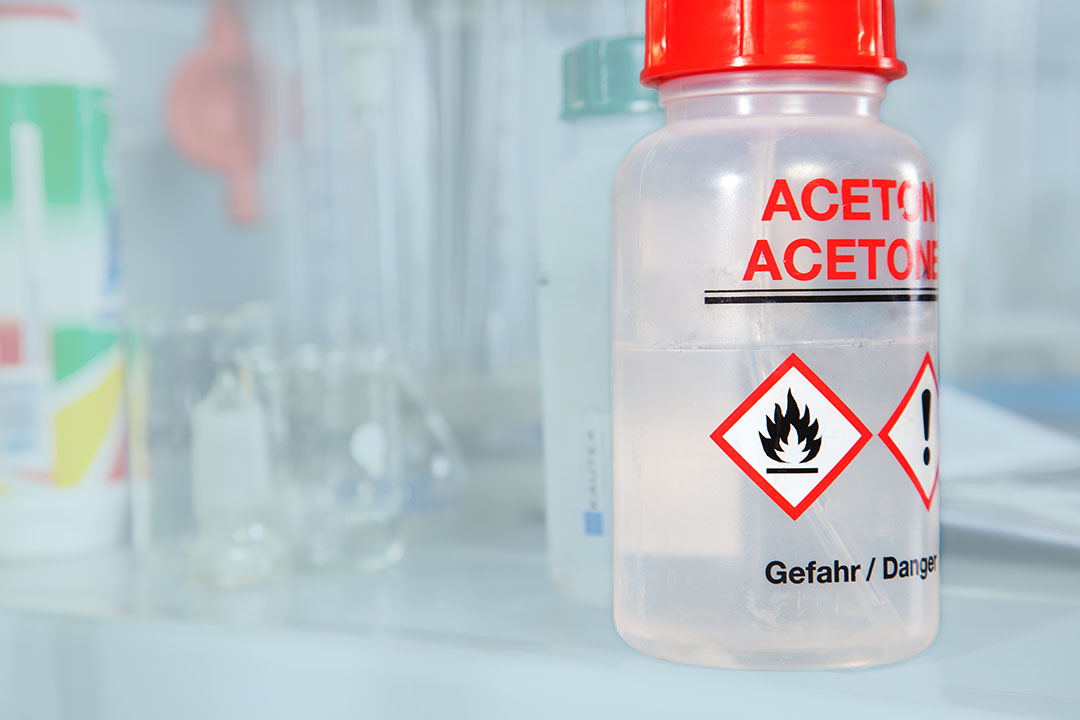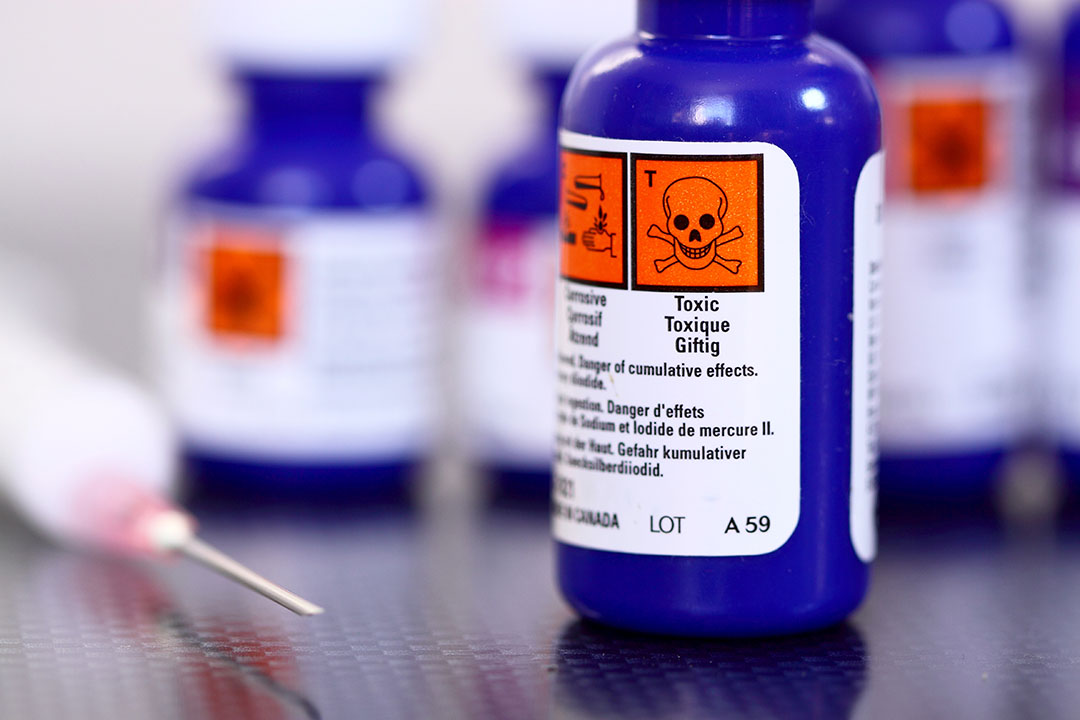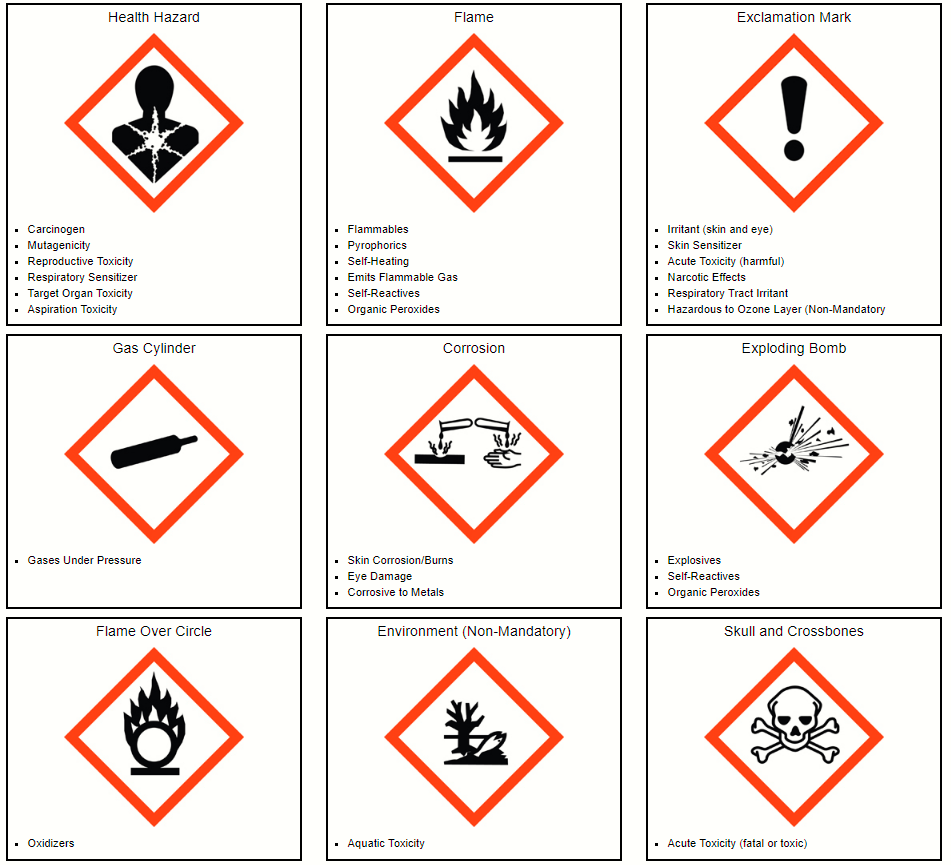In 2012, the Occupational Safety and Health Administration (OSHA) adopted new hazardous chemical labeling requirements. Almost all chemical manufacturers, importers, distributers and employers in the United States are now required to use the Globally Harmonized System of Classifying and Labeling Chemicals (GHS). This new system updated the requirements for safety data sheets (formerly Material Safety Data Sheets) and chemical labels.
GHS Labeling Requirements

The signal word is one word that indicates the chemical’s relative level of severity. The two possible signal words are “DANGER” and “WARNING.” “DANGER” indicates a more extreme or immediate hazard, and “WARNING” indicates a less extreme or immediate hazard. The precautionary statement is a short statement that describes the recommended measures that users should take to minimize adverse effects of chemical exposure. Two examples of precautionary statements are “Do not allow contact with water. Wash hands thoroughly after handling” and “Keep away from heat, hot surfaces, sparks, open flames and other ignition sources. No smoking.”
Pictograms
The GHS uses nine standard pictograms. These are black images surrounded by a red diamond border on a white background. The nine pictograms are:
- Chronic health hazards (such as a carcinogen or mutagen)
- Flammable materials
- Irritants
- Gases under pressure
- Corrosives
- Explosives
- Oxidizers
- Acute (or short-term) toxicants
- Environmental toxicants
Safety Data Sheets
Safety data sheets (SDSs) provide employers and employees with in-depth information about a chemical. You must have an SDS available for every hazardous chemical in your facility, and you must store it in a readily accessible location that’s known to your employees. Every person that works with a hazardous chemical must review the SDS before they work with or near the chemical. Each SDS must contain the following sixteen sections:
Chemical identification
- Hazard identification
- Composition and information on ingredients
- First-aid measures
- Fire-fighting measures
- Accidental release measures
- Handling and storage
- Exposure controls and PPE
- Physical and chemical properties
- Stability and reactivity
- Toxicology information
- Ecology information
- Disposal considerations
- Transport information
- Regulatory information
- Other information
Summary
The GHS requires employers to use chemical labels and safety data sheets as a part of their hazard communication (HAZCOM) plan. All employees must be trained on their facility’s specific chemical hazards and HAZCOM plan before they begin work with or near potentially hazardous chemicals. Employees must be able to read and understand chemical labels and know where to find and how to understand safety data sheets.
For more information, click the following links:
- A Guide to the Globally Harmonized System of Classification and Labeling of Chemicals (GHS)
- OSHA Publications: GHS
- Toxic and Hazardous Substances



 Chemical identification
Chemical identification